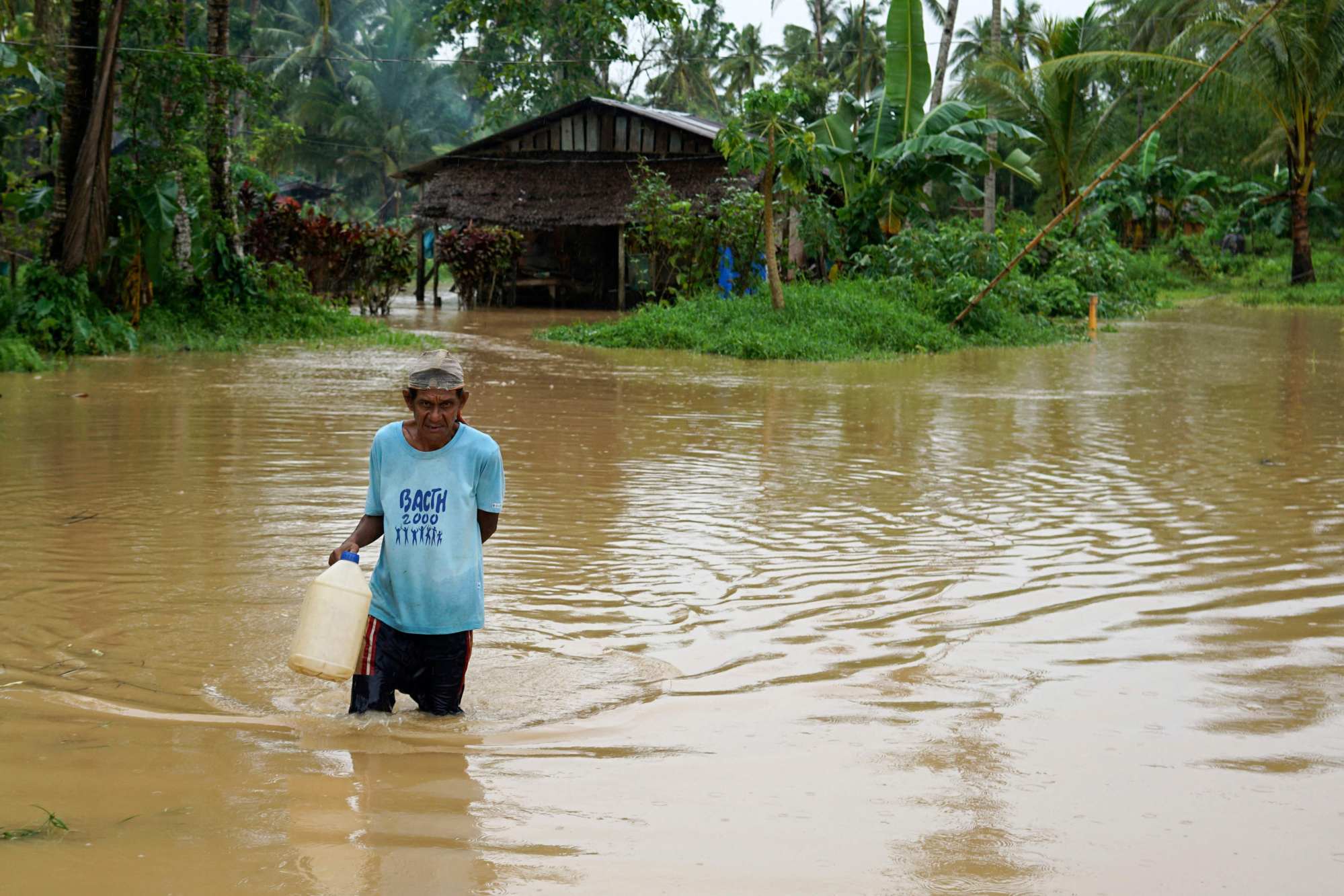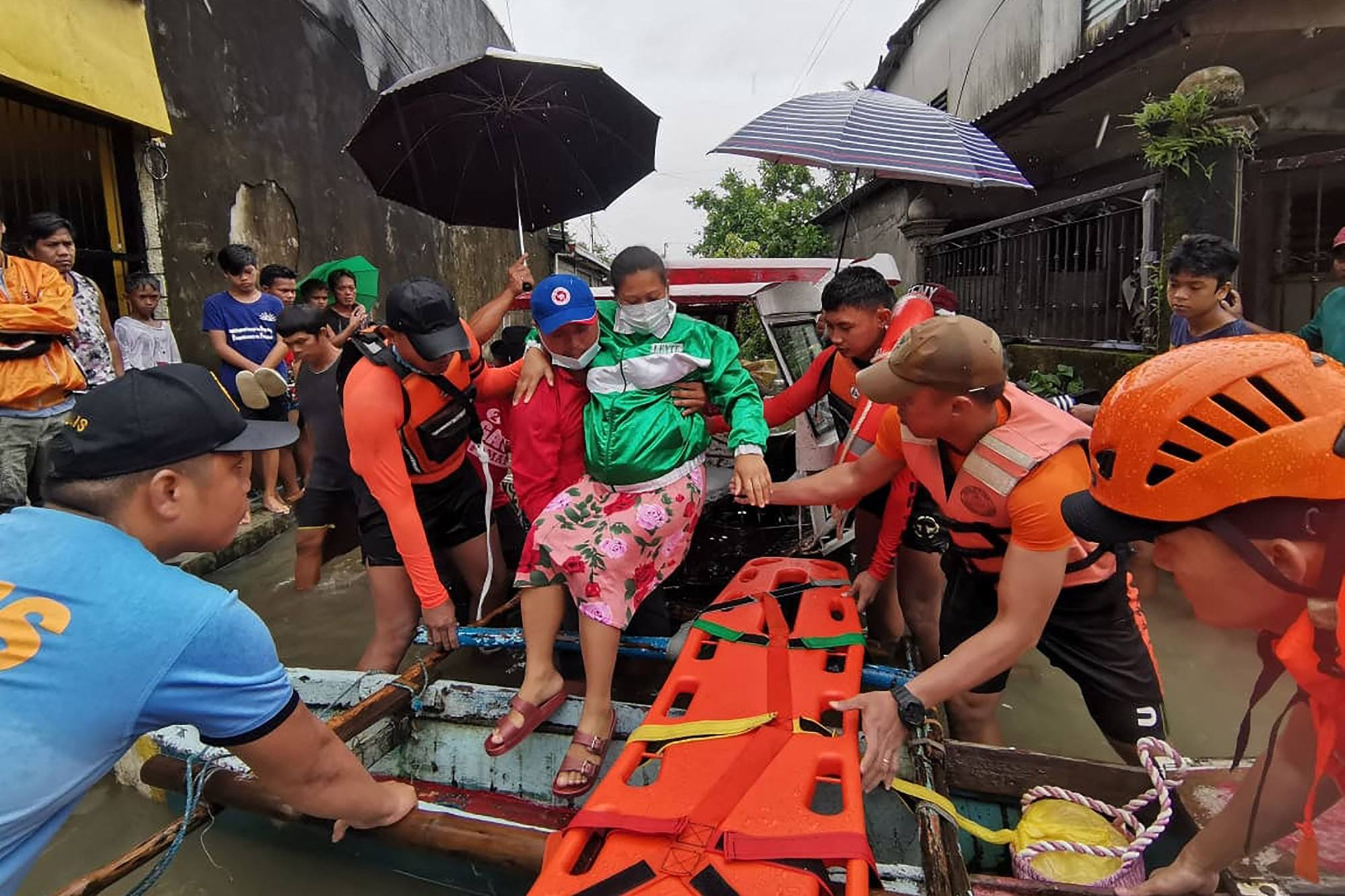
42 killed as Tropical Storm Megi pounds Philippines, bringing landslides and flooding
- More than 13,000 people fled to emergency shelters as fields were submerged, roads cut off and power knocked out
- Some houses were buried in mud up to the rooftops in the hard-hit province of Leyte
The death toll from the strongest storm to hit the Philippines this year rose to 42 on Tuesday, as rescuers recovered more bodies from villages devastated by rain-induced landslides.
Emergency personnel suspended the search for survivors around Baybay City, in the central province of Leyte, in the late afternoon as it was “too dangerous” to continue in the dark, said Marissa Miguel Cano, public information officer for the city government.
More than 13,000 people fled to emergency shelters as the storm pounded the region Sunday, the national disaster agency said, flooding houses, inundating fields, cutting off roads and knocking out power.

Photos posted on Facebook and verified by Agence France-Presse show several houses buried in mud up to the rooftops in Bunga, one of the affected villages in Leyte.
“Yesterday the rain was so hard, it was non-stop for more than 24 hours,” resident Hannah Cala Vitangcol said.
The 26-year-old teacher fled with her family to a hotel on Monday after waking to find nearby homes had been covered in an avalanche of mud.
“I was crying because I know the people buried there and I was also scared because there were mountains behind our house,” she said.
Filipinos dying of diarrhoea as typhoon cuts off access to clean water, food
Philippine coastguard and police personnel rescued people from their homes in the flooded town of Abuyog, carrying residents onto orange stretchers laid on floating boats.
Tropical Storm Megi – known in the Philippines by its local name Agaton – is the first major storm to hit the disaster-prone country this year.
Whipping up seas, it forced dozens of ports to suspend operations and stranded nearly 6,000 people at the start of one of the busiest travel periods of the year.

The storm comes four months after a super typhoon devastated swathes of the archipelago nation, killing more than 400 people and leaving hundreds of thousands homeless.
Scientists have long warned that typhoons are strengthening more rapidly as the world becomes warmer because of human-driven climate change.

.png?itok=arIb17P0)